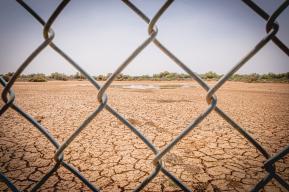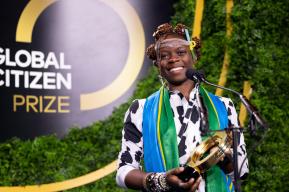The trending AI avatar app, Lensa, is making news around the world for automatically creating non-consented sexualized or nude photos of its users, mostly women. Unfortunately, this is not new or an isolated case. In 2020, more than 100,000 women saw unauthorised, fake or sexualised pictures of themselves being disseminated online just for sake of “entertainment”. These images are not benign, but instead radicalize men and boys by treating women as expendable, creating a generational change that challenges the trajectory of women's liberation and empowerment, with disproportionate impacts on women and girls of colour, from the LGBTI and other communities.
It is high time for social media and other digital platforms to take responsibility and protect their users in line with international human rights law. But what are the solutions?
UNESCO launched a Global Dialogue bringing together public, private and civil society experts from different parts of the world to reflect on innovative solutions on the occasion of the International Day of Women in Multilateralism, 25th January 2023. It is the hoped effect that this global dialogue and the resulting recommendations of the panellists will inspire similar public discussions in countries or regions where the problem of online gender disinformation has not yet been launched and where regulatory or co-regulatory frameworks and standards for social media and other digital platforms are in development, in line with international human rights law.
Watch the replay
Combatting online gendered disinformation
Women working in professions involving a public online presence such as politicians, artists, journalists and defenders of human rights and gender equality are particularly targeted by coordinated campaigns of online gendered disinformation, harassment, hate speech or even death and rape threats.
The kind of threats that I got were not just simply talking about the various ways that I was going to be killed, but they were also highly gendered in the sense that they would talk about the fact that I would be raped before I would be killed, the fact that I would be sexually assaulted and violated and abused.
We do things differently when we are under threat. it's almost like a kind of self-censorship, we are even careful about the way we look… it gets so bad that there are some live streamers who actually consider suicide, they really do think of ending their days because of harassment.
UNESCO’s latest study shows that 73% of the women journalists surveyed experienced online violence and one out of five have been attacked or abused offline in connection with online violence. Maria Ressa, Noble Peace Prize winner (2022) received daily death threats, rape threats, doxing, racist, sexists and misogynistic abuse in text, image and memes since 2016, with more than 90 hate messages an hour on Facebook, in response to an investigative series she produced exposing state-linked disinformation.
An earlier UNESCO study shows that there has been a rise in reported attacks against women artists online that leads them to leave the digital space all together, or even worse. Zere Asylbek, Kyrgyzstan musician, suffered a massive campaign of online harassment, after she posted a music video on YouTube, addressing gender discrimination in her country. For the next ten days, she received about 2,000 abusive comments and messages on YouTube, Facebook and Instagram saying that they were going to find her and rape her (Arab News and Freemuse).
The vicious circle of Hate speech, retaliation, self-censorship…
Research suggests that the modus operandi of social media platforms amplify gendered disinformation and hate speech with devastating effects on women’s lives in diverse ways. Women can be professionally and reputationally damaged, leading them to censor or self-censor, discouraging them from entering specific professional fields with public exposure and their mental health can be highly affected. 30% of the women journalists surveyed by UNESCO answered that they self-censor on social media and 20% withdrew from all online interaction due to harassment and threats.
Online attacks against women take on a snowball effect as they move across platforms, use coded language to escape detection, mobilize and grow exponentially. They move between the offline and online world in ways that can also sometimes lead to physical violence.
Some women who dare to speak up might not be supported or risk retaliation; women journalists may be afraid of sharing vital news, scientists of exploring new research, and artists from creating new or critical forms of expression. Pushing women and girls out of the digital public space affects the whole democratic system. This is a complex problem for which all stakeholders must collectively assume their share of responsibility to protect women and girls in the digital environment.
This is all violence, it’s gender-based violence and it has an impact not just on the women who are harassed online, but the entire democracy is in peril.
Many platforms have put in place mechanisms for users to report abuse, however, most of the time, these mechanisms are not effective or reactive enough. Furthermore, it was suggested that platforms are deliberately allowing gendered disinformation in order to meet ‘bottom lines’ and investor demands.
There is a massive problem related to the business model of social media platforms because online disinformation is being “monetised” by many of these companies and by many other smaller players who are selling “followers lists” to attack women and others. This is a huge market. It is hard to ask the platforms to self-regulate because it is not in their interest to go against very serious, yet profitable, disinformation campaigns.
What are the solutions?
Regulations or co-regulations are necessary at the global level that are applied in a manner consistent with international human rights standards.
…good intentioned regulations, where the rule of law is strong, can be copy-pasted with bad intentions in other jurisdictions…regulations are important, but they should be rolled out in a way that they actually follow the international human rights framework.
AI and machine learning models are providing some solutions to recognize hate speech and toxic speech characteristic of online gendered disinformation campaigns. There are, however, shortcomings inherent in pure AI based models. Human review alongside the use of algorithmic tools to detect violent content targeting women and girls in all their diversity will be necessary to reverse gender biases and stereotypes and take into account cultural and linguistic contexts and nuances.
There has to be a significant degree of human input into these kinds of detection and reporting mechanisms and enforcement overall.
Greater diversity among designers of AI based tools for detecting unwanted content is crucial. However, we know that women represent only 12% of machine learning researchers and 22% of all AI professional developers (World Economic Forum, 2018) which means that their perspectives are likely to be overlooked in the design of the new AI generative software and programmes. Furthermore, finding solutions to the structural barriers of entry for women and ensuring diversity in digital tech companies or among content moderators may not be enough to reach the desired level of impact.
We need to target the persons with the power to make change, namely the engineers and the investors. Also, AI is used today to detect hate speech, violence language and toxic speech. We can set up inclusive ways to obtain structured community feedback from around the world through, for example, algorithmic bias bounties [to identify and mitigate gendered disinformation]
Long term investments to change narratives and innovative ways to tackle harmful social norms are required to address such an urgent and complex matter. This begins by addressing the root causes of gendered disinformation and gender-based violence online, working with men and boys within the family, at school and within the digital spheres. It also means shifting the burden from the shoulders of the victims and focusing on the perpetrators and their enablers. Holding them accountable, without impunity, is urgent.
Available Speeches
Opening:
- Audrey Azoulay, Director-General, UNESCO
- H.E. Rachel Annick Ogoula Akiko Epouse Obiang Meyo, Ambassador, Permanent Delegate of Gabon to UNESCO
Keynote:
- Irene Khan, United Nations Special Rapporteur on the promotion and protection of the right to freedom of opinion and expression
Concluding Remarks:
- H.E. Tamara Rastovac Siamashvili, Chairperson of UNESCO’s Executive Board
























